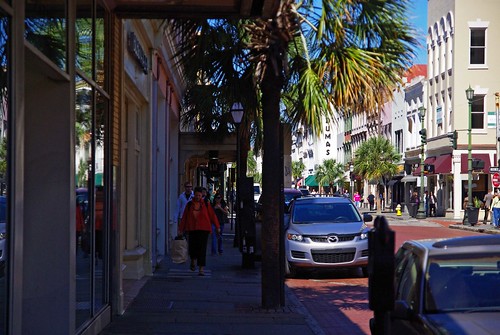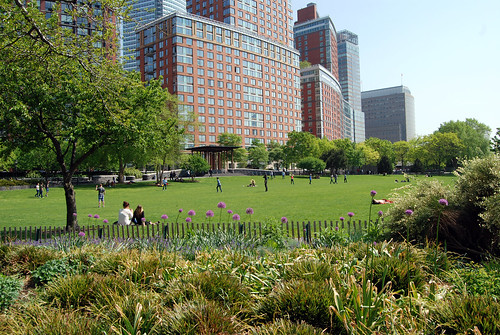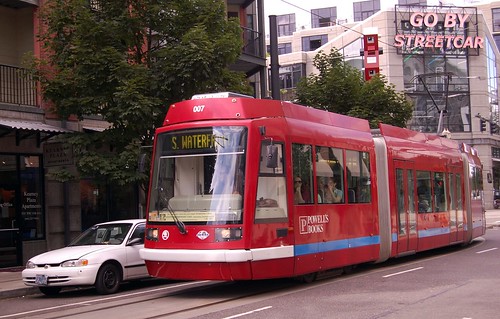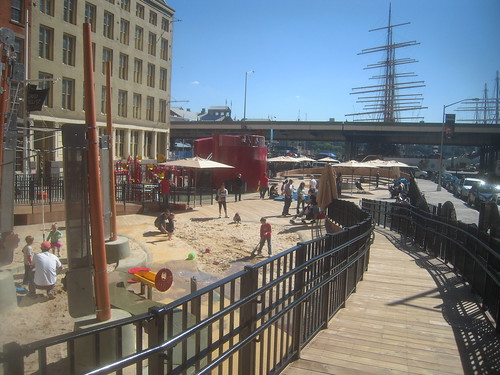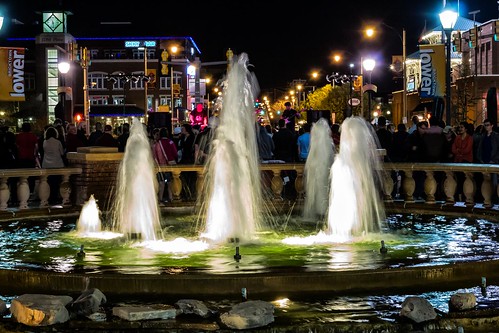From Planetizen:
Does your city have a long-range downtown plan?
Does your city have a downtown development corporation, a downtown alliance, or similar non-profit organization that is focused solely on promoting downtown as a destination for businesses, residents, and development?
Does your city have public policies (like tax abatements, grants, and other special incentives) to promote downtown development?
Hopefully, you answered ‘yes’ to the questions above. But even if you answered ‘no’ to each question, and your city doesn’t have any official program in place to help make your downtown a more vibrant urban place, there are still lots of strategies your community can pursue to improve the urban vitality of your downtown. That’s what this post is all about.
Below are 12 strategies that can transform your city’s downtown into a thriving urban district. For each strategy, you’ll see a concise explanation of how the strategy will make your downtown more vibrant and one or two examples of cities that have successfully implemented the strategy.
By the way, if you’re interested in reading more about the importance of downtown to your city, please see my 3-part blog series on The Most Prosperous Downtowns of the 21st Century where I analyzed how the downtown areas of the 100 largest cities have fared over the past decade.
Vibrant Downtown Strategy #1
Turn one-way streets into two-way streets.
Why?
One-way streets are great if your only goal is to channel traffic through your downtown, but they are bad for pedestrian activity and retail opportunities. Two-way streets create a more comfortable pedestrian environment and have been shown to increase property values.
There is a good reason that the Main Streets that sit at the urban core of small towns and cities across the U.S. are almost always two-way streets. From Wichita, KS to Charleston, SC, cities across the U.S. are realizing the benefits of two-way streets in their urban cores.
Vibrant Downtown Strategy #2
Establish a regularly occurring public event with showcasing downtown merchants, music, and food.
Why?
Ongoing public events help drive positive awareness of your city’s downtown. Bringing people from your entire city downtown on a regular basis, once a week or even just once a month, serves to make citizens aware of the unique amenities that exist in the central part of their community.
Events like a weekly farmers market (like the Union Square Farmers Market in NYC) or a monthly art walk (many cities have a “First Friday Art Walk” like the one in Denver) can draw thousands of people to your downtown on a regular basis. And many of these people do not live or work near downtown, so by creating the event, you can expose a wider portion of your community to the unique assets located in your urban core. These citizens are then more likely to visit downtown for shopping/dining/entertainment on other occasions and are more likely to consider living downtown or perhaps locating their business downtown. An added benefit of these types of events is that they engage local merchants, artists, and entrepreneurs, helping to make these businesspeople champions for downtown revitalization.
Vibrant Downtown Strategy #3
Create more land for development (landfill into a body of water, remove land from a floodplain, take back land from a freeway, etc).
Why?
If you could literally expand your city’s downtown by creating more land area for new downtown development, you would jump at the opportunity, right?
Well, if your city is one of the lucky ones that sits next to an ocean, you might be able to use landfill to expand the land area of your downtown, as New York City did with its Battery Park City neighborhood in Lower Manhattan. In fact, Battery Park City was built on 90 acres of landfill created from more than 1.2 million cubic yards earth that was excavated from the original World Trade Center site.
But this isn’t the only way to create more land for development. How about that floodplain land in your downtown? You could make some infrastructure investments that take some of that land out of the floodplain, opening up more acreage for downtown development. That’s what Austin is doing with its Waller Creek project, a major initiative that will rejuvenate the currently underutilized waterway that runs through the eastern section of the city’s downtown.
Or what about that massive freeway that runs along the edge of your downtown? You could tear it down and build a park in its place like Portland did in its downtown.
Or you could sink it and cover it with a park like Dallas did.
Or you could sink it and cover it with a park and a convention center like Seattle.
Vibrant Downtown Strategy #4
Make under-utilized public land available for private sector development
Why?
All types of government (federal, state, and local) own real estate assets. Sometimes these “assets” are not doing any good for the government entity that owns them or for the community they sit in. Structures like vacant government office buildings, abandoned power plants, and other obsolete public facilities in your city’s downtown are often prime candidates for redevelopment by the private sector.
Check out how Austin is using its defunct Seaholm power plant as the centerpiece of a new mixed-use downtown development.
Or, take a look at what the private sector has done with a former elementary school in Portland, turning it into a hotel/microbrewery (this one is not downtown-specific but illustrates the strategy so well, I had to include it).
Vibrant Downtown Strategy #5
Consolidate regional economic development partner organizations into a single downtown location.
Why?
It may seem like an inconsequential decision but the location of government offices and community-serving organizations matters. This is even more important for organizations that interact with the outside business world like chambers of commerce and economic development organizations. Of course, public decisions to place jobs downtown are beneficial, but in this case, we’re talking about the image that is portrayed to the outside world.
What type of message do you think it sends when a city’s economic development corporation is located in a big-box strip center, or when the local chamber of commerce is housed in the upstairs of a convenience store? (Yes, I’ve actually seen both of these examples in the wild!). Take a look at what San Angelo, TX did.
San Angelo’s regional economic development partners chose to a construct a new consolidated facility in a strategic central city location to help spur further downtown revitalization. And the added benefit from this decision is the synergies gained by housing several cooperating organizations under a single roof.
Vibrant Downtown Strategy #6
Create a permanent public market.
Why?
The most successful downtown districts have many major functions (employment, residential, entertainment, shopping, etc.). A key ingredient for creating a diverse downtown district is to have major destinations that draw people to downtown for reasons other than employment. Many cities have pursued professional sports teams for this reason, but this approach only yields intermittent benefits, because major league stadiums/arenas lie vacant much of the year.
On the other hand, a large public market can attract thousands of downtown visitors on a daily basis. Seattle’s Pike Place Market is a great example of such a public market. An estimated 8,000,000 to 10,000,000 annual visits are made to the market.
Vibrant Downtown Strategy #7
Open a downtown satellite campus of a local university.
 UTSA Downtown Campus: San Antonio, TX
UTSA Downtown Campus: San Antonio, TXWhy?
Downtown campuses can be a win-win for universities and for a city’s downtown. Major universities are often landlocked, and have trouble meeting their needs for facility expansion. Opening a downtown satellite campus can be a great option to expand the university’s reach. And the creation of a downtown university campus can do wonders for a city’s downtown.
The introduction of several thousand college students to a downtown can provide a major boost to the diversity of a downtown district, especially if student housing is included as part of the expansion. Downtown Phoenix benefits immensely from Arizona State University’s downtown campus. And the University of Texas-San Antonio downtown campus is a major asset for downtown San Antonio.
Vibrant Downtown Strategy #8
Build a streetcar line connecting your downtown to an adjacent urban neighborhood.
Why?
Adding a streetcar line that connects your downtown to nearby urban neighborhoods will expand transportation options in your urban core, a good thing. But the biggest benefit from streetcars isn’t transportation-related, it’s an expanded potential for development. In fact, this is what streetcars were initially intended to do. In the early 1900s, it was standard practice for residential real estate developers to create streetcar lines that connected their land plots to the center city so that land values and development potential would increase on their property.
Modern day streetcar lines prove the time-tested benefits of streetcars for urban revitalization. Portland and Seattle offer good examples of streetcar lines that have more than paid for themselves in the way of new real estate development. In Portland’s case, the new streetcar line led to $3.5 billion in new development within 2 blocks of the streetcar line in only the first 7 years after the line opened.
Vibrant Downtown Strategy #9
Create an awesome downtown playground to make your downtown more kid-friendly and family-friendly.
Why?
There is no question that downtowns across the U.S. are undergoing a major renaissance, especially in the way of new residential development. But, this resurgence has been fueled almost entirely by singles, young professionals, and empty nesters. Even the downtowns with the highest amounts of residential development in the last decade (Chicago, Seattle, Miami), struggle in their efforts to appeal to families with children. Check out this Huffington Post article which highlights the big-picture challenges associated with designing downtowns for families.
Many cities have high-quality downtown children’s museums but very few have playgrounds of equal caliber. Creating a top-notch downtown playground can be a truly transformative strategy, particularly if it’s part of a broader initiative to make your downtown more family-friendly and kid-friendly, because so few cities have an urban core that really appeals to families.
One example of a really unique downtown playground is the Imagination Playground in NYC’s Financial District. (Side note- The Imagination Playground was under construction when I lived in Lower Manhattan, but at the time our son, Gavin, was a newborn. We moved to Austin when he was only 2.5 months old, right after the playground opened, but on a visit to NYC back in 2012, Gavin – nearly 2 years old by that point – spent a good deal of time at this playground, especially in the splash pad section.)
San Antonio is another city aiming to make its downtown much more kid-friendly. The city is currently designing some major changes as part of the redevelopment of HemisFair Park (a large park named for the city’s 1968 world fair). The redevelopment plans for HemisFair Park aim to reshape the park from a largely underutilized asset into a regional destination for families.
Vibrant Downtown Strategy #10
Create a branded downtown entertainment district.
Why?
Downtowns that offer a new, exciting district – even if it’s just a small area of a couple of blocks – provide residents with a reason to check out what is going on in the center of their community. A major upside of this strategy is that it can help to turn around the perceptions and reality of downtowns that have are not vibrant.
Perhaps the best example of this strategy is Oklahoma City’s Bricktown, a large mixed-use entertainment district that has transformed OKC’s one-time “dead-after-5pm” downtown into what is now hailed as a 24/7 attraction. Bricktown, which makes up the eastern section of downtown OKC, was filled with abandoned buildings as recently as the 1990s. Today, thanks to major infusions of public and private investments, the district is home to dozens of restaurants and bars, thousands of hotel rooms, and a growing number of residences.
Kansas City’s Power & Light District is a similar success story (though on a smaller scale than Bricktown) of a new entertainment district that breathed fresh life into that city’s downtown.
Vibrant Downtown Strategy #11
Establish maximum parking standards for new downtown developments, or at least remove minimum parking requirements for new buildings.
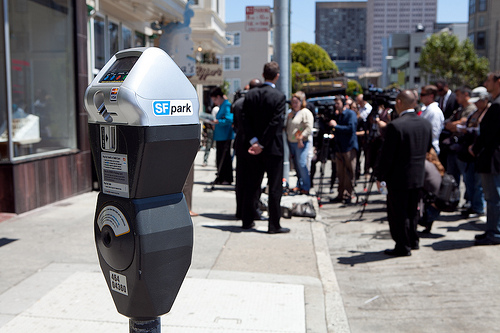
SFpark variable rate parking pilot: San Francisco, CA
Why?
Unfortunately, the majority of U.S. cities impose parking minimums instead of parking maximums, even in their downtown districts. This means that real estate developers are forced to provide a minimum level of parking when building new downtown offices, hotels, or residential structures, ignoring the market demand for parking. While these policies are generally intended to enhance or maintain access to downtown districts, they have the unintended side effect of fostering an over-dependence on auto travel while making downtown areas less walkable and less transit-supportive. Fortunately, there is a growing movement in large cities to abolish minimum parking requirements in downtowns.
Austin’s city council recently enacted an ordinance that removes mandatory minimum parking in the central business district.
And a few cities are really blazing a bold new path by not only removing parking minimums, but actually going the extra step to establish maximum parking standards which place an upper limit on the amount of new parking spaces allowed in downtown areas. You can read a fascinating account of the transformation of San Francisco’s parking policies over the last few decades here. In 1985, San Francisco first began experimenting with the removal of parking requirements for downtown commercial properties. Since then, San Francisco has increasingly adopted public policies that are aimed at reducing the amount of parking throughout the city, especially in the downtown area.
A relatively new innovation out of San Francisco is the SFpark pilot program, which introduced demand-responsive variable parking meter pricing with real-time information in multiple neighborhoods. A handful of other cities are experimenting with similar variable-rate approaches to on-street parking, including New York with its PARK Smart pilot project.
Vibrant Downtown Strategy #12
Set up a downtown bike share program.
Why?
Any strategy that results in more transportation choices available within a downtown is a good thing if you’re aiming for a more vibrant urban core. And bike share programs – which have been spreading like wildfire across large U.S. cities in the past couple years – are certainly a good option for enhancing transportation access. But what makes this strategy so valuable is that it also provides indirect marketing and branding service for your downtown.
Bike share programs, with their highly visible stations and riders, broadcast a continual message to casual observers that downtown is a place for recreation and entertainment. Divvy Bikes in Chicago and Citi Bike in New York are two of the largest and most successful bike share programs in the U.S.
Lastly, bike share programs are highly flexible in terms of how they can be implemented and managed. Some systems are managed by non-profits, others are owned by local transportation authorities, and many are sponsored by major corporations or wholly owned and operated by the private sector. This flexibility in ownership/management models can help explain why the bike share craze has spread so quickly in such a short time.
Bottom Line
Admittedly, this is by no means a complete list…there are dozens, no hundreds, of different approaches to downtown revitalization. And you may have noticed that I chose to focus primarily on achievable strategies that are very much within the realm of the public sector. So, what’s the big takeaway? Whatever state your city’s downtown is currently in, there are many actions that can be taken to boost the vitality of your community’s urban core.
What is your city doing to make its downtown more vibrant?
John Karras believes that all communities have the potential to become more vibrant. John’s professional passions are aligned at the three-way intersection of urban planning, economic development and transportation policy. John founded urbanSCALE.com to empower urban planning and economic development professionals with the knowledge and tools needed to make their communities more vibrant. John is also the creator of the urbanSCALE Rating System, the first comprehensive measure of how urban a city is on a scale of 1 to 10.

